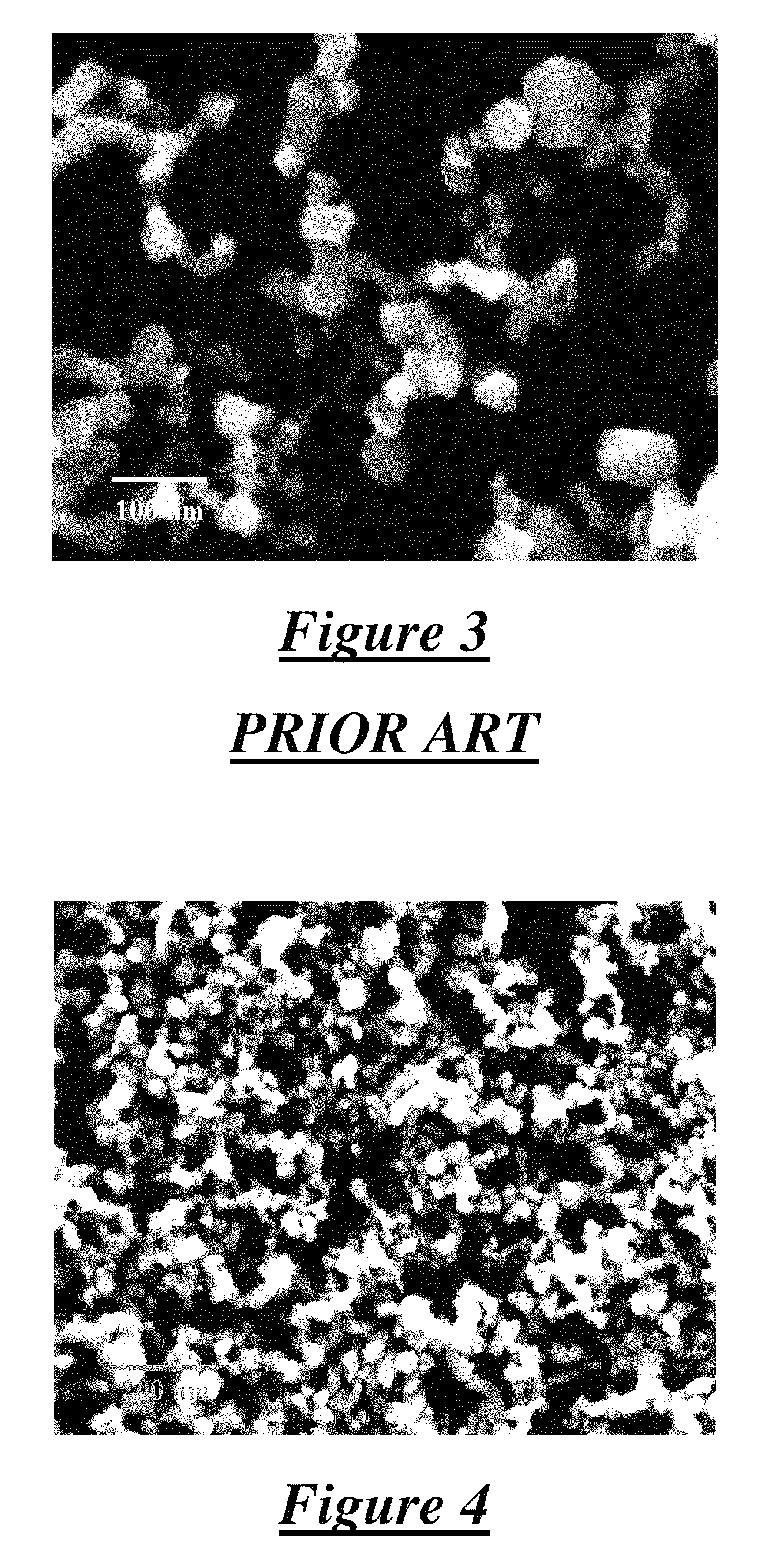Hybrid photovoltaic cell module
a photovoltaic cell and hybrid technology, applied in the field of hybrid photovoltaic cell modules, can solve the problems of low efficiency of third generation photovoltaic cells, low light conversion efficiency, and high cost of photovoltaic cells, and achieve the effect of increasing light conversion efficiency
- Summary
- Abstract
- Description
- Claims
- Application Information
AI Technical Summary
Benefits of technology
Problems solved by technology
Method used
Image
Examples
examples
Formation of the Instant Invention
[0083]A hybrid photovoltaic cell module (Module 1) is formed according to the instant invention. Module 1 includes a substrate (22) and a conducting composition (26) disposed on the substrate (22) as shown in FIG. 13. More specifically, the substrate (22) is a 25 mm×25 mm square glass (SiO2) sheet that includes a 150-200 nm thick coating of the conducting composition (26) disposed thereon. The conducting composition (26) includes indium tin oxide (ITO). The substrate (22) and conducting composition (26) have a sheet resistance of approximately 8-12 Ohm. The substrate (22) including the conducting composition (26) disposed thereon is commercially available from Delta Technologies of North-Stillwater, Minn.
[0084]Before the substrate (22) is used to form Module 1, the substrate (22) is immersed in an acetone bath for 10 minutes and then dried in a stream of nitrogen. Subsequently, the substrate (22) is immersed in an isopropyl alcohol (IPA) and / or etha...
PUM
| Property | Measurement | Unit |
|---|---|---|
| thickness | aaaaa | aaaaa |
| thickness | aaaaa | aaaaa |
| thickness | aaaaa | aaaaa |
Abstract
Description
Claims
Application Information
 Login to View More
Login to View More - R&D
- Intellectual Property
- Life Sciences
- Materials
- Tech Scout
- Unparalleled Data Quality
- Higher Quality Content
- 60% Fewer Hallucinations
Browse by: Latest US Patents, China's latest patents, Technical Efficacy Thesaurus, Application Domain, Technology Topic, Popular Technical Reports.
© 2025 PatSnap. All rights reserved.Legal|Privacy policy|Modern Slavery Act Transparency Statement|Sitemap|About US| Contact US: help@patsnap.com



